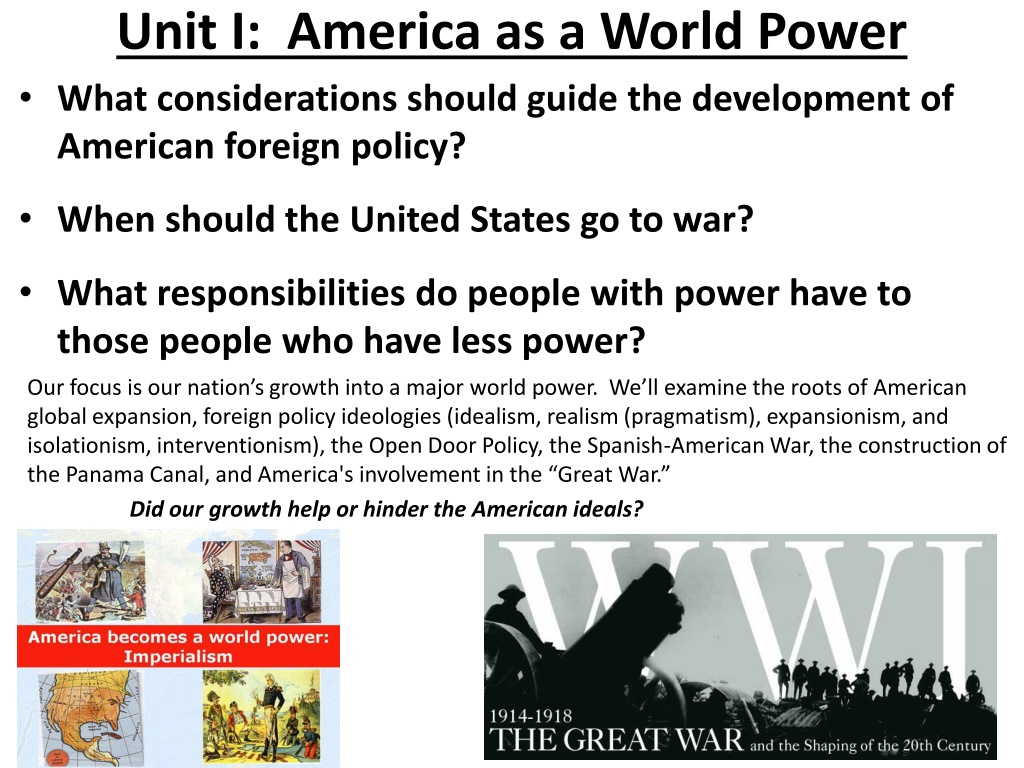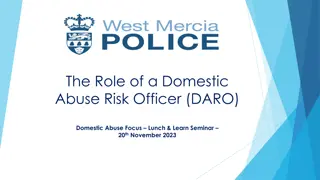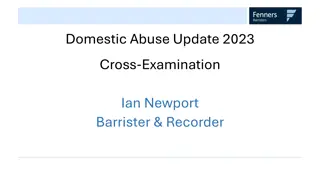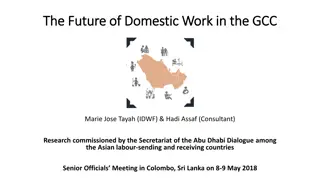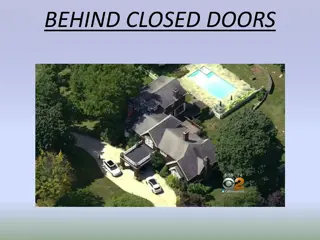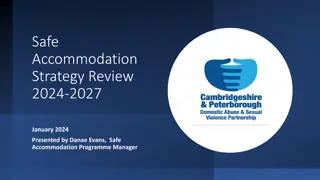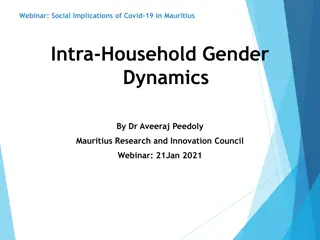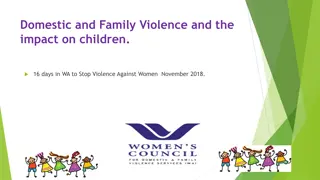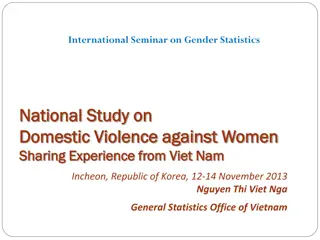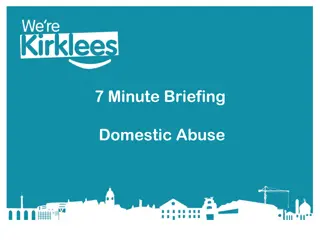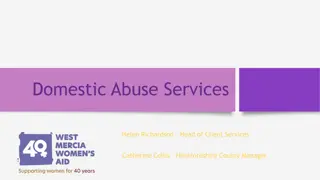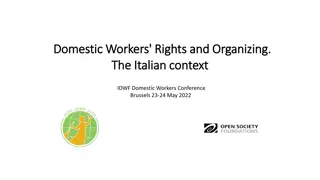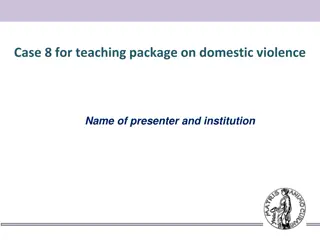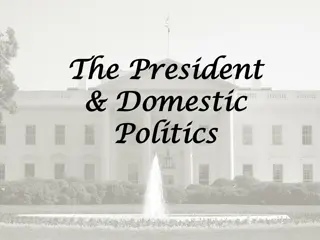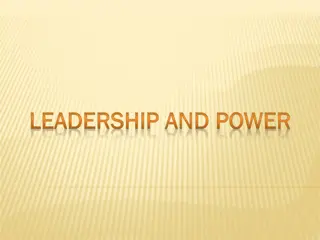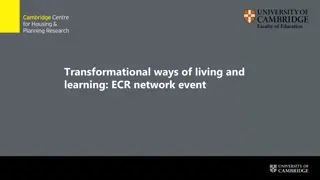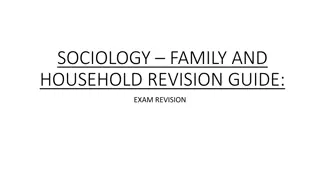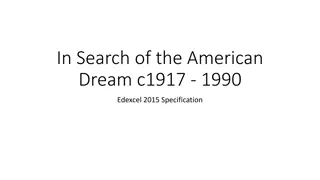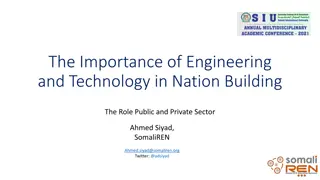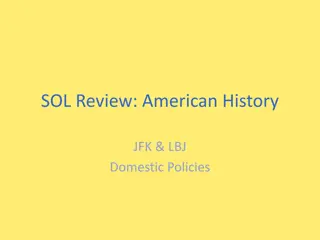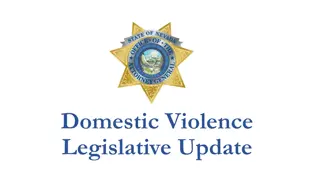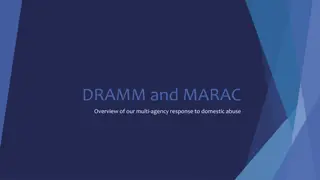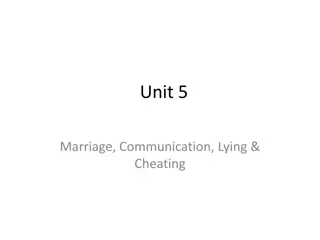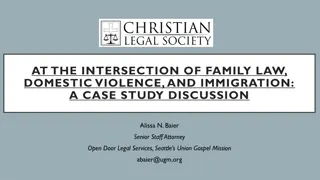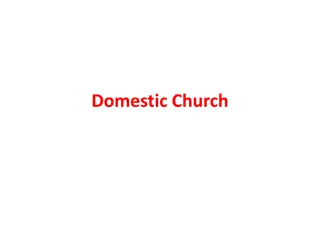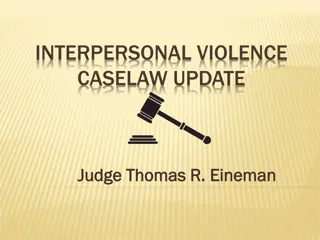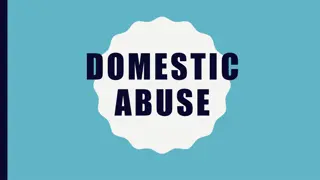American Evolution: From Global Power to Domestic Transformation
Explore American foreign policy, the impact of global conflicts, and domestic changes from the late 19th to the mid-20th century. Delve into policymaking, wartime decisions, societal shifts, and the nation's development as a superpower, assessing the alignment with founding ideals amidst global challenges and internal transformations.
Download Presentation

Please find below an Image/Link to download the presentation.
The content on the website is provided AS IS for your information and personal use only. It may not be sold, licensed, or shared on other websites without obtaining consent from the author. Download presentation by click this link. If you encounter any issues during the download, it is possible that the publisher has removed the file from their server.
E N D
Presentation Transcript
Unit I: America as a World Power What considerations should guide the development of American foreign policy? When should the United States go to war? What responsibilities do people with power have to those people who have less power? Our focus is our nation s growth into a major world power. We ll examine the roots of American global expansion, foreign policy ideologies (idealism, realism (pragmatism), expansionism, and isolationism, interventionism), the Open Door Policy, the Spanish-American War, the construction of the Panama Canal, and America's involvement in the Great War. Did our growth help or hinder the American ideals? http://old.cbsd.org/sites/teachers/middle/jclifford/PublishingImages/imperialism.jpg http://www.pbs.org/greatwar/images/hm_top.jpg
Unit II: Roaring 1920s, Great Depression, and New Deal What happens when traditional and modern cultures interact? What influences do economic excesses have on American society? What is the proper role of government in people s lives? We ll examine a variety of domestic issues in post-WW I America involving new economic, social, political, ideological, and cultural developments from the roaring decade of the 1920s and into the horrendous economic crisis of the 1930s. The presidencies of Harding, Coolidge, Hoover, and Roosevelt will be encountered, and finally, the lasting impact of the New Deal will be evaluated. Academic Essay: Did America move closer to or further from its founding ideals during the interwar period?
Unit III: World War II and early Cold War When should the United States go to war? What is required to achieve victory in war? What impact do challenges abroad have on Americans at home? Did America s development as a super power move it closer or further away from its founding ideals? http://t0.gstatic.com/images?q=tbn:ANd9GcQR1kLIjeFvlb1C9uWbzy88MSoPgpnYJ-FmAUMS-U2mUQNKMbz7FQ http://worldpoliticsuncovered.files.wordpress.com/2012/06/cold-war-flag.jpg America's participation in the second global conflict of the 20th century had profound international & domestic effects. Our focus is on decisions & actions related to the origins of WW II; the actual fighting & human effects of war (esp. atomic bomb & Holocaust); lastly, the post-WW II world & nation in the early stages of the mostly ideological Cold War (formation of UN Cuban Missile Crisis ). Advanced DBQ: Was the threat of a global communist revolution real or mostly exaggerated? http://awesometalks.files.wordpress.com/2008/08/ng30.jpg
Unit IV: Decades of Change How does suburban life shape the individual? How can people change society? How far should the government go to promote equality and opportunity? What happens when the government loses the support of the public? Following WW II, America experienced great domestic changes in the 1950s, a second Civil War for equal rights for African-Americans, and tremendous fighting abroad and at home over Vietnam. Assassinations (JFK, MLK, & RFK), racial tensions, and Watergate are troublesome lows in this tumultuous time, but suburban life, the New Frontier, Great Society, & New Left make some noteworthy changes during this three-decade era (1950s-1970s). Did America move closer or further from its founding ideals in the three decades after World War II? http://media.npr.org/assets/img/2013/06/18/ap3967239957153-96c0664625d74f175a70507ec0a7c345bf3c5e4e.jpg http://rack.0.mshcdn.com/media/ZgkyMDEyLzEyLzA0LzkxL21sa2RheWdldHNhLmJMcy5qcGcKcAl0aHVtYgk5NTB4NTM0IwplCWpwZw/32da927e/351/mlk-day-gets-a-rare-social-media-tie-in-from-chevy-01e389df3c.jpg
Unit V: End of the Cold War & Contemporary America What effect does a changing economy have on American society? What is the proper role of the government in people s lives? How did the end of the Cold War alter U.S. security & its position in the world? U.S. History II ends with a look at some of America s most recent & noteworthy developments, including the presidencies of Ronald Reagan, George. H.W. Bush, & Bill Clinton, the fall of the Berlin Wall & end of the Cold War, and finally the terrorist attacks on September 11th, 2001. To what extent has America lived up to its founding ideals as our nation (and the world) transitioned from the 20th into the 21st century?
